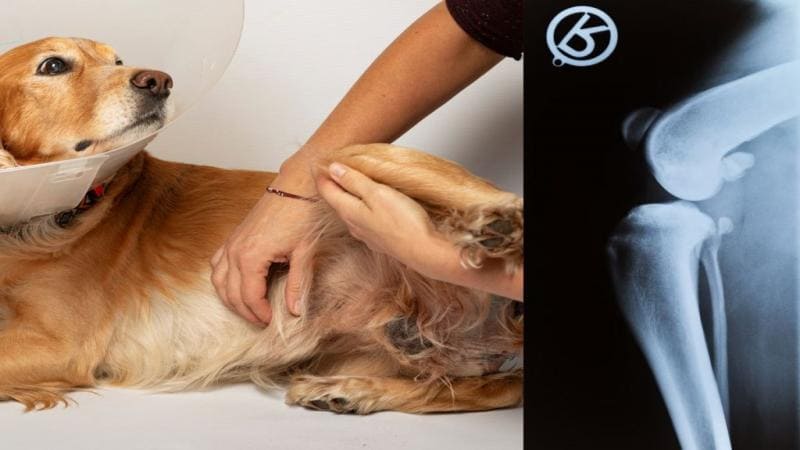Our beloved canine companions bring immense joy to our lives, but sometimes they face health challenges that require surgical intervention. One such procedure that’s becoming increasingly common is TPLO. TPLO stands for Tibial Plateau Leveling Osteotomy, and it’s a surgical technique designed to address torn or ruptured cranial cruciate ligaments in dogs.
Your veterinarian is your go-to guide in this decision-making process. They will conduct a thorough examination of your furry companion, which may include X-rays and other diagnostic tests, to confirm the CCL tear and determine the most suitable course of action.
Let’s dive deep into the world of TPLO surgery, exploring what it entails, what to expect before, during, and after the procedure, and how to ensure your furry friend makes a smooth recovery.
The Cruciate Ligament Conundrum
Before we get into the nitty-gritty related to TPLO surgery, let’s first understand the importance of the cranial cruciate ligament and why it can tear in our four-legged friends. The cranial cruciate ligament, abbreviated CCL, is a crucial stabilizing structure in the knee joint.
It prevents the shin bone (tibia) from sliding forward relative to the thigh bone (femur), ensuring smooth and pain-free movement. Over time, a variety of factors can weaken this ligament, including genetics, wear and tear, or an unfortunate injury, leading to tears or ruptures.
Is Surgery the Right Choice?

Surgery is just one of the available options for addressing a torn CCL in dogs. The choice of treatment depends on factors such as the dog’s size, age, activity level, and the severity of the CCL tear. The overall total complication rates following TPLO are estimated to be 11.4%, with a major complication rate of 3.1%.
Other options include conservative management, which involves rest and physical therapy, as well as other surgical techniques like TTA (Tibial Tuberosity Advancement) and extracapsular repair.
Preparing for Surgery

If surgery is recommended, here’s what you should know:
- Consultation: The journey begins with a consultation with your veterinarian. They will thoroughly evaluate your dog’s condition and discuss treatment options with you.
- Pre-Surgical Care: Before the big day, your dog may need to fast for a specified period, typically overnight. This fasting ensures their stomach is empty, reducing the risk of complications during anesthesia.
- Anesthesia: On the day of surgery, your furry friend will be placed under general anesthesia. This means they’ll be comfortably asleep throughout the procedure, ensuring they don’t experience any pain.
The Procedure
This surgery is a complex yet highly effective procedure. It involves altering the angle of the top of the tibia bone to eliminate the need for the damaged CCL. Here’s a simplified breakdown of what happens during the surgery:
- Incision: The surgeon makes a carefully planned incision on the front of the affected knee to access the joint.
- Bone Cutting: With precision, the surgeon makes a controlled cut in the top part of the tibia, which is then rotated to the correct angle. This adjustment is what stabilizes the knee joint.
- Plate and Screws: A metal plate and screws are used to secure the repositioned bone.
- Closure:Once everything is in place, the surgeon closes the incision with sutures.
Post-Surgery Recovery
Recovery from this kind of surgery occurs in several stages, and it’s crucial to be prepared for each one:
- Immediate Post-Surgery: After the procedure, your dog will be a bit groggy due to the anesthesia. They may need to stay at the veterinary hospital for a day or more for observation.
- Home Care: Once your furry friend is back home, they’ll likely wear an Elizabethan collar (you know, the “cone of shame”) to prevent any licking or biting of the incision site. Pain medications and antibiotics may also be prescribed to ensure a comfortable recovery.
- Limited Activity: For several weeks, your dog will need to rest and have their activity restricted. Short leash walks for bathroom breaks are usually allowed, but any strenuous activities, such as running and jumping, should be avoided.
- Physical Therapy: Depending on your dog’s needs, your veterinarian may recommend physical therapy and rehabilitation exercises to help them regain strength and mobility.
- Follow-up Visits: Regular check-ups with your veterinarian will be essential to monitor your dog’s progress and ensure that their recovery is on track.
While this surgery can significantly enhance your dog’s quality of life by stabilizing the knee joint, it’s vital to understand that they may develop arthritis over time. As a result, your dog might require ongoing management, including joint supplements and weight control, to ensure their continued well-being.
Surgery for TPLO can be a game-changer for dogs suffering from CCL tears. It can restore their mobility and comfort, allowing them to enjoy an active and happy life once again.
If your veterinarian recommends this surgery for your four-legged companion, don’t hesitate to ask questions and seek clarification on any concerns you may have. With proper care and dedication to their recovery, your dog will be back on their paws in no time!



